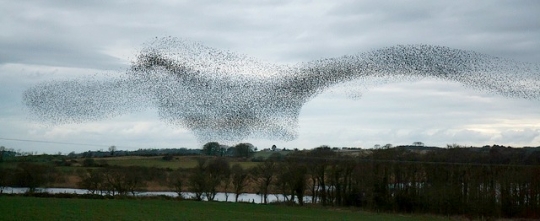News
Starling Murmuration Survey Launches
- Details
- 17 October 2014
Starlings often form large groups and undertake spectacular aerial displays known as murmurations. Little is known about why this occurs.
The Society of Biology and the University of Gloucestershire have today launched the Starling Murmuration Survey as part of Biology Week. The aim is to address the murmuration mystery by encouraging people across the UK to send in data about their sightings.

Ornithologist Dr Anne Goodenough, from the University of Gloucestershire, said: "It has been suggested that starling murmurations occur because starlings gain safety in numbers, confusing potential predators such as birds of prey before settling down to roost. Another theory is that they could be gathering to keep warm or exchange information. However, despite starling murmurations being an incredible spectacle, the biology of murmurations remains little studied. This study will harness people power to increase knowledge about this amazing phenomenon."
Starling numbers have declined alarmingly over the last few years: since the mid-1970s the UK population has fallen by 66%. The starling is now red listed in the UK as a bird of high conservation concern. The cause of the starling decline is unknown.
In this national citizen science project, the public are being asked to record where and when they see murmurations occurring. People will also be asked to estimate duration and number of birds, and if there was a predator such as a bird of prey in the area.
Dr Goodenough and her colleagues Professor Adam Hart and Dr Richard Rolfe, will analyse the data to find out how the environment, weather, and season affect the size, frequency and time of murmurations: "By gaining a better understanding of starling behaviour, and current UK numbers and distribution, we may be able to help protect them", she said.
Jon Kudlick, from the Society of Biology said, "Our recent Flying Ant Survey received thousands of records over three years and has shown how effective citizen science can be in gaining insight into the mysteries of the natural world."

